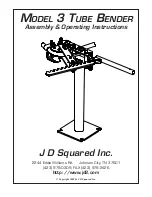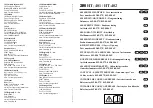
I. SHUTTLE MINIPRESS INTRO
The Shuttle MiniPress was designed to serve the patient in the period between surgery and
her/his ability to bear partial weight. It was developed to provide simple, quality movement shortly
after surgery and then expand into a low-level exercise program. A patient may use the
MiniPress in bed, on the floor, sitting in a chair or wheelchair, or on a treatment table.
In response to the need for a method of restoring and maintaining the range of motion for
postoperative patients, CDC Shuttle Systems has developed the Shuttle MiniPress. This highly
portable device can be easily transported to the patients home as well as be used in a
professional setting with a patient in need of early range of motion movement or exercise. The
MiniPress utilizes the same general technology employed on all models of Shuttle machines and
is poised to bring the benefits of early closed chain rehabilitation to an even wider range of
patients than was previously possible.
Users and professionals working in clinical, institutional, athletic, and specialized settings have
created a wide variety of exercises for Shuttles that were not imagined when the original CMC
Shuttle 2000 was first conceived. We expect a similar expansion of applications to occur with
the MiniPress. Please connect with us if you have a specific protocol to share with other Shuttle
MiniPress users.
Page 5
Summary of Contents for MiniPress
Page 2: ...Page 2 ...
Page 4: ...Page 4 ...
Page 7: ...Page 7 ...
Page 14: ...Page 14 ...
Page 36: ...Variation Add a stability ball between hands and Footplate Page 36 ...






































